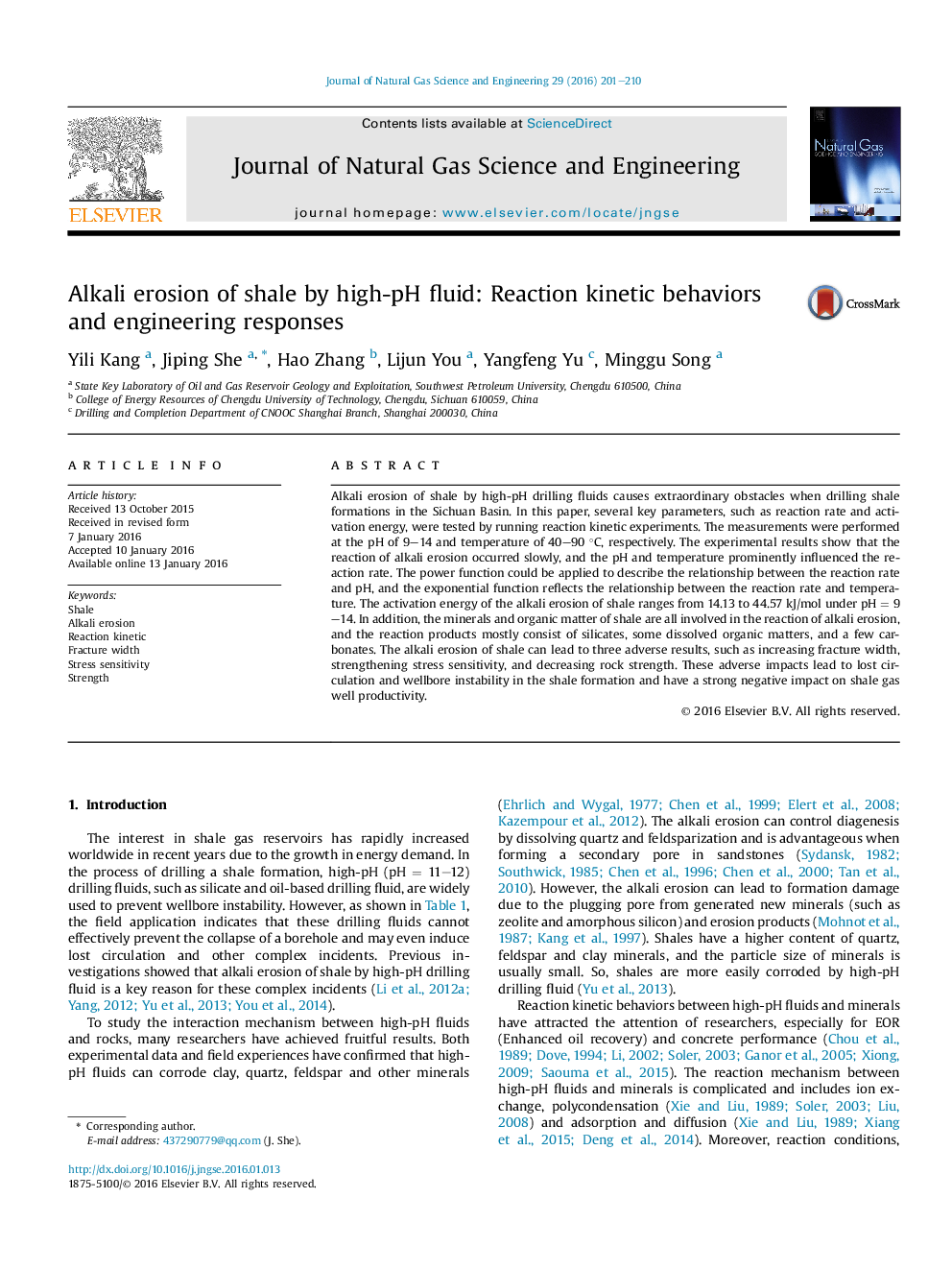| Article ID | Journal | Published Year | Pages | File Type |
|---|---|---|---|---|
| 1757353 | Journal of Natural Gas Science and Engineering | 2016 | 10 Pages |
•Alkali erosion of shale has not attracted widespread attention in drilling of shale formation.•Equations of reaction kinetic and activation energy were established based on experiments.•Reaction mechanism of alkali erosion was discussed by analysis of reaction products.•Negative influences of alkali erosion when drilling shale formation were discussed.
Alkali erosion of shale by high-pH drilling fluids causes extraordinary obstacles when drilling shale formations in the Sichuan Basin. In this paper, several key parameters, such as reaction rate and activation energy, were tested by running reaction kinetic experiments. The measurements were performed at the pH of 9–14 and temperature of 40–90 °C, respectively. The experimental results show that the reaction of alkali erosion occurred slowly, and the pH and temperature prominently influenced the reaction rate. The power function could be applied to describe the relationship between the reaction rate and pH, and the exponential function reflects the relationship between the reaction rate and temperature. The activation energy of the alkali erosion of shale ranges from 14.13 to 44.57 kJ/mol under pH = 9–14. In addition, the minerals and organic matter of shale are all involved in the reaction of alkali erosion, and the reaction products mostly consist of silicates, some dissolved organic matters, and a few carbonates. The alkali erosion of shale can lead to three adverse results, such as increasing fracture width, strengthening stress sensitivity, and decreasing rock strength. These adverse impacts lead to lost circulation and wellbore instability in the shale formation and have a strong negative impact on shale gas well productivity.
